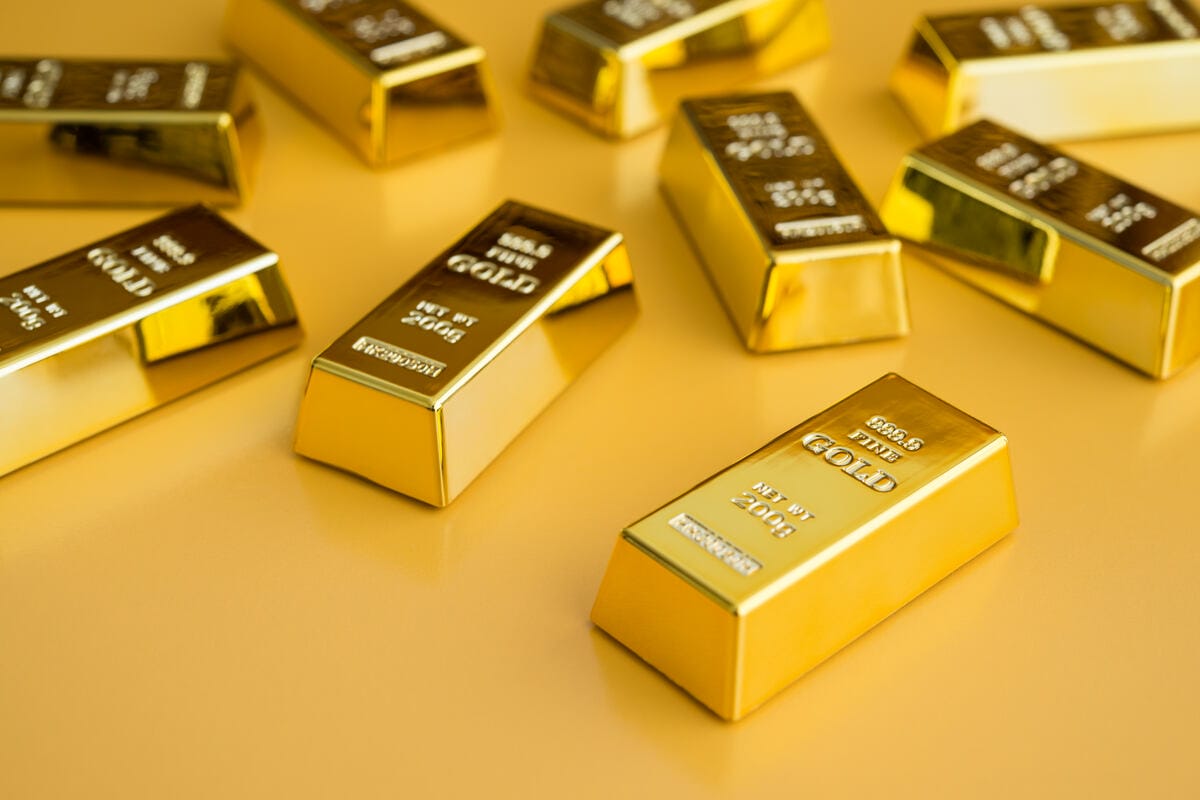Gold prices saw a decline on Wednesday after reaching an all-time high in the previous session, as U.S. Federal Reserve Chair Jerome Powell’s hawkish remarks solidified expectations for slower rate cuts this year. Investors are also anticipating a crucial U.S. inflation report.
In the UAE, gold rates saw a decline, with 24-carat gold dropping by AED1.75 to settle at AED347.75. Similarly, 22-carat gold decreased by AED1.50, bringing it to AED323.50. Additionally, 21-carat gold fell to AED321.25, while 18-carat gold also retreated, reaching AED266.00.
Spot gold decreased by 0.4 percent to $2,885.53 per ounce by 05:04 GMT, after climbing to a record peak of $2,942.70 on Tuesday. Meanwhile, U.S. gold futures fell by 0.8 percent to $2,910.70.
Powell indicated on Tuesday that the economy is performing well, and the Fed is not in a rush to further reduce interest rates, but is ready to act if inflation decreases or the job market shows signs of weakness.
Gold is viewed as a safeguard against inflation; however, elevated interest rates diminish the attractiveness of this non-yielding asset. The U.S. Consumer Price Index (CPI) report is scheduled for release at 13:30 GMT later today. According to a Reuters poll, the CPI is expected to have risen by 0.3 percent in January, following a 0.4 percent increase in the previous month.
Read more: UAE gold prices up AED2.5, global rates hit record high amid Trump tariffs
Market reactions and upcoming data
Investors are keenly observing upcoming Producer Price Index (PPI) data set to be released on Thursday, and Powell is also slated to testify before Congress later today.
On Tuesday, Mexico, Canada, and the European Union criticized U.S. President Donald Trump’s decision to impose tariffs on all steel and aluminum imports starting next month, heightening concerns of a significant global trade conflict as investors brace for additional trade duty announcements.
In the precious metals market, spot silver dipped by 0.2 percent to $31.83 per ounce, platinum fell by 0.5 percent to $978.06, and palladium decreased by 0.2 percent to $973.54.
Gold prices soared to a record high on Tuesday, as investors turned to the safe-haven asset following U.S. President Donald Trump’s implementation of new 25 percent tariffs on steel and aluminum imports, raising fears of inflation and an escalating trade war.
In the UAE, gold rates experienced an increase, with 24-carat gold rising by AED2.5 to reach AED349.5, and 22-carat gold climbing AED2.25 to AED325. Furthermore, 21-carat gold went up by AED2.25 to AED301.75, while 18-carat gold saw a rise of AED2, reaching AED267.25.
Spot gold surged by 0.4 percent to $2,917.80 per ounce as of 0510 GMT, after earlier hitting a record high of $2,942.70 during the session. U.S. gold futures also strengthened by 0.3 percent to $2,944.10.
Trade war uncertainty impacts gold prices
Last week, the World Trade Organization announced that China initiated a dispute over the U.S. tariffs. China also declared tariffs on certain U.S. goods in retaliation to President Donald Trump’s 10 percent levy on Chinese imports. This marked a new trade war between the world’s top two economies, which continued to raise safe-haven demand for gold and further supported the surge in prices.
The Trump administration’s tariff plans come with inflation risks, three Fed officials warned on Monday. One official argued that uncertainty regarding price outlooks calls for slower interest rate cuts than would otherwise be necessary. With the current U.S. administration creating market uncertainty, and central bank buying showing no signs of slowing down, gold prices are very likely to exceed $3,000 this year.
Job growth slowdown and its implications for gold
U.S. job growth in January decelerated more than expected following solid increases in the preceding two months. However, a 4.0 percent unemployment rate likely provides the Fed with justification to hold off on reducing interest rates until at least June. The Labor Department’s closely watched employment report released on Friday also indicated strong wage growth last month, with average hourly earnings experiencing their largest increase in five months, helping to sustain consumer spending. The resilience of the labor market remains a key driver of economic expansion.
Gold is traditionally considered a safe investment during economic and geopolitical turmoil, yet higher interest rates reduce the appeal of the non-yielding asset. U.S. Treasury Secretary Scott Bessent stated on Thursday that the Trump administration was not particularly concerned about Fed’s trajectory on interest rates and is focusing on lowering 10-year Treasury yields. The yield on the benchmark 10-year U.S. government bond fell to its lowest level since December 12 earlier this week amid expectations that the Fed will cut rates twice by the end of 2025, further benefiting gold prices.








